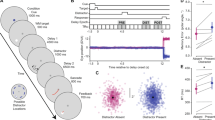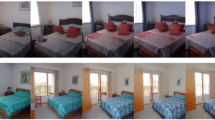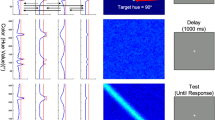Abstract
Understanding the mechanism of information processing in the human brain remains a unique challenge because the nonlinear interactions between the neurons in the network are extremely complex and because controlling every relevant parameter during an experiment is difficult. Therefore, a simulation using simplified computational models may be an effective approach. In the present study, we developed a general model of neural networks that can simulate nonlinear activity patterns in the hierarchical structure of a neural network system. To test our model, we first examined whether our simulation could match the previously-observed nonlinear features of neural activity patterns. Next, we performed a psychophysics experiment for a simple visual working memory task to evaluate whether the model could predict the performance of human subjects. Our studies show that the model is capable of reproducing the relationship between memory load and performance and may contribute, in part, to our understanding of how the structure of neural circuits can determine the nonlinear neural activity patterns in the human brain.
Similar content being viewed by others
References
S. B. Paik and D. A. Glaser, PLoS Comput. Biol. 5, e1000342 (2009).
S. B. Paik and D. A. Glser, PLoS Comput. Biol. 6, e1000927 (2010).
A. Baddeley, Science 255, 556 (1992).
T. Pasternak and M. W. Greenlee, Nat. Rev. Neurosci. 6, 97 (2005).
T. C. Sprague, E. F. Ester and J. T. Serences, Curr. Biol. 24, 2174 (2014).
D. M. Dacey and M. R. Petersen, Proc. Natl. Acad. Sci. U. S. A. 89, 9666 (1992).
F. Rieke, Spikes: exploring the neural code (MIT Press, Cambridge, 1999), Chap. 1, p. 1.
S. L. Franconeri, G. A. Alvarez and P. Cavanagh, Trends Cogn. Sci. 17, 134 (2013).
P. Wilken and W. J. Ma, J. Vis. 4, 1120 (2004).
D. Fougnie, J. W. Suchow and G. A. Alvarez, Nat. Commun. 3, 1229 (2012).
S. Keshvari, R. van den Berg and W. J. Ma, PLoS Comput. Biol. 9, e1002927 (2013).
P. M. Bays, R. F. G. Catalao and M. Husain, J. Vis. 9, 1 (2009).
Author information
Authors and Affiliations
Corresponding author
Rights and permissions
About this article
Cite this article
An, S., Choi, W. & Paik, SB. Development of a computational model on the neural activity patterns of a visual working memory in a hierarchical feedforward Network. Journal of the Korean Physical Society 67, 1713–1718 (2015). https://doi.org/10.3938/jkps.67.1713
Received:
Accepted:
Published:
Issue Date:
DOI: https://doi.org/10.3938/jkps.67.1713




